#Cost Optimization WooCommerce
Explore tagged Tumblr posts
Text
How Much to Spend on WooCommerce Website Development?
Are you an entrepreneur seeking to build a robust online presence and enhance your sales? Look no further than WooCommerce website, one of the most popular e-commerce platforms available today. With its user-friendly interface, extensive customization options, and seamless integration with WordPress, WooCommerce is the go-to choice for entrepreneurs seeking to create a powerful online…
#Cost Optimization WooCommerce#domain registration#e-commerce hosting#e-commerce website#hiring WooCommerce developers#Online Store Development#professional web development#website design costs#website development pricing#website development tips#WooCommerce costs#WooCommerce features#WooCommerce investment#WooCommerce optimization#WooCommerce plugins#WooCommerce website development
2 notes
·
View notes
Text
Dropshipping: Start an E-commerce Business Without Inventory in 2025
Meta Description:
Learn how to start an online store using the dropshipping business model. Discover how to sell products without inventory and build a profitable e-commerce business in 2025.

Introduction: Why Dropshipping Is Still a Top Business Model in 2025
In today’s digital economy, more people are looking for ways to start a business with low risk, low overhead, and high scalability. That’s where dropshipping comes in. With the dropshipping business model, you can start an online store and sell products without inventory, making it one of the most accessible and profitable e-commerce opportunities in 2025.
Whether you’re a beginner or a seasoned entrepreneur, dropshipping allows you to build a brand and generate income online—without ever having to handle physical products.
What Is the Dropshipping Business Model?
Dropshipping is an order fulfillment method where a store doesn’t keep the products it sells in stock. Instead, when a customer places an order, the seller purchases the item from a third-party supplier—usually a wholesaler or manufacturer—who ships it directly to the customer.
As a result, you never need to hold inventory or deal with shipping logistics.
Key Benefits:
Low start-up costs
No inventory management
Wide product selection
Work from anywhere
Scalable and automated processes
How to Start an Online Store Using Dropshipping
Step 1: Choose a Niche
Select a niche you’re interested in with high demand and manageable competition. Popular niches in 2025 include:
Home fitness equipment
Eco-friendly products
Pet accessories
Personal development tools
Tech gadgets
Skincare and beauty
Step 2: Find a Dropshipping Supplier
Use platforms like:
AliExpress
DSers
Spocket
Printful (for print-on-demand products)
Zendrop
Choose suppliers with fast shipping times, reliable customer service, and quality products.
Step 3: Build Your Online Store
Create a website using platforms like:
Shopify (most popular for dropshipping)
WooCommerce (WordPress plugin)
BigCommerce
Design a clean, user-friendly store with optimized product pages, trust signals, and secure checkout.
Step 4: Import Products and Set Pricing
Use apps like DSers or Oberlo (for Shopify) to easily import products from suppliers into your store. Set prices with profit margins in mind, and don’t forget to factor in shipping and transaction fees.
Step 5: Launch and Market Your Store
Use digital marketing strategies to attract customers:
Facebook and Instagram ads
TikTok organic or paid content
Google Shopping ads
SEO for product descriptions and blogs
Influencer marketing partnerships
How to Sell Products Without Inventory Successfully
The key to success in dropshipping lies in the customer experience. Since you don’t control fulfillment, you must:
Choose reliable suppliers
Provide accurate shipping timelines
Offer excellent customer service
Use automated tools to track orders and follow up with customers
Also, focus on building a brand—not just a store. Use unique product descriptions, custom packaging (if possible), and high-quality imagery to create a trustworthy online presence.
Pros and Cons of the Dropshipping Business Model
Pros:
Easy to launch and manage
No need for warehousing or upfront bulk purchases
Test multiple products with little risk
Can be operated from anywhere
Cons:
Lower profit margins than traditional e-commerce
Less control over shipping times and inventory
Higher competition in some niches
Customer service responsibility still falls on you
Final Thoughts: Is Dropshipping Worth It in 2025?
Absolutely. If you want to start an online store without the risk and hassle of managing inventory, dropshipping is still one of the most effective business models available. With the right tools, suppliers, and marketing strategy, you can build a successful e-commerce business that earns income around the clock.
The sooner you start, the faster you can test ideas, learn the ropes, and scale a business that works for you.
Need Personal Or Business Funding? Prestige Business Financial Services LLC offer over 30 Personal and Business Funding options to include good and bad credit options. Get Personal Loans up to $100K or 0% Business Lines of Credit Up To $250K. Also Enhanced Credit Repair ($249 Per Month) and Passive income programs (Can Make 5-10% Per Month; Trade $100K of Someone Esles Money).
Book A Free Consult And We Can Help - https://prestigebusinessfinancialservices.com
Email - [email protected]
Keywords Used: dropshipping business model, start online store, sell products without inventory
Learn More:
Prestige Business Financial Services LLC
"Your One Stop Shop To All Your Personal And Business Funding Needs"
Website- https://prestigebusinessfinancialservices.com
Email - [email protected]
Phone- 1-800-622-0453
2 notes
·
View notes
Text
Why Shipease is the Smartest Choice for E-Commerce Shipping in 2025

Why Shipease is the Smartest Choice for E-Commerce Shipping in 2025
In the ever-evolving world of e-commerce, efficient and reliable shipping isn’t just a feature — it’s the backbone of customer satisfaction and business growth. As we step into 2025, one platform continues to stand out for e-commerce businesses looking for a smarter, smoother, and more scalable shipping solution: Shipease.
Here’s why Shipease is the smartest choice for e-commerce shipping in 2025:
1. All-in-One Shipping Dashboard
Shipease eliminates the hassle of juggling multiple courier partners. With its centralized dashboard, you can compare rates, generate labels, schedule pickups, and track shipments — all in one place. It’s designed to save time, cut manual errors, and improve operational efficiency.
2. AI-Powered Courier Recommendations
Thanks to its smart algorithm, Shipease automatically suggests the best courier based on delivery location, cost, and performance history. This means faster deliveries, lower return rates, and happier customers.
3. Real-Time Tracking and Notifications
Today’s customers expect to know exactly where their order is. Shipease provides real-time tracking updates to both you and your buyers, reducing WISMO ("Where is my order?") queries and improving customer experience.
4. Seamless Integration with Major Marketplaces
Whether you're selling on Amazon, Shopify, WooCommerce, or your own website, Shipease easily integrates with major e-commerce platforms. Sync your orders effortlessly and manage your shipping in a streamlined workflow.
5. Flexible Shipping Options
From same-day delivery to cash on delivery (COD) and reverse logistics, Shipease offers a wide range of shipping options. This flexibility allows you to cater to diverse customer preferences and boost your overall conversion rates.
6. Affordable Pricing and Transparent Billing
Shipease offers competitive shipping rates with no hidden charges. With clear invoicing and billing insights, e-commerce sellers get complete visibility over shipping expenses, making budgeting and forecasting a breeze.
7. Automated NDR and RTO Management
Non-delivery reports (NDRs) and return-to-origin (RTO) shipments can be a nightmare for online sellers. Shipease automates the process of addressing delivery failures, communicates with customers, and helps minimize return costs.
8. Dedicated Support and Account Management
Need help fast? Shipease offers responsive customer support along with dedicated account managers who understand your business goals and help optimize your shipping strategy.
9. Data-Driven Insights for Smarter Decisions
With in-depth analytics and shipping performance reports, you can track KPIs, optimize courier selection, and uncover areas to improve logistics and customer experience.
10. Future-Ready Technology
In 2025, speed and adaptability are key. Shipease stays ahead of the curve by continuously upgrading its tech infrastructure, ensuring faster processing, enhanced security, and new features that support your e-commerce growth.
Conclusion
E-commerce success in 2025 hinges on delivering orders quickly, reliably, and affordably — and Shipease is built to help you do just that. Whether you’re a small seller or a large-scale brand, Shipease offers the tools, tech, and support you need to ship smarter, scale faster, and deliver better.
Switch to Shipease today — because smart businesses deserve smart shipping.
2 notes
·
View notes
Text

20 Reasons Why Do you create website using WordPress CMS?
Hire: https://fiverr.com/s/e6LKqzk
Portfolio: http://wasimakram.dev
Reasons to Use WordPress CMS:
User-Friendly Interface
Easy to learn and manage, even for non-technical users.
Customizability
Thousands of themes and plugins allow for extensive customization.
SEO-Friendly
Built-in SEO features and plugins like Yoast SEO make optimization easier.
Responsive Design
Most WordPress themes are mobile-friendly and responsive.
Cost-Effective
Offers free and paid themes and plugins, catering to different budgets.
Flexibility
Suitable for any type of website: blogs, portfolios, e-commerce, forums, etc.
E-Commerce Capabilities
Easily integrates with WooCommerce for building online stores.
Community Support
Large, active community of developers and users for troubleshooting.
Regular Updates
Frequent updates ensure security and feature enhancements.
Multilingual Support
Allows for easy creation of multilingual websites through plugins like WPML.
Content Management
Simplifies the process of creating, editing, and organizing content.
Security Features
Numerous plugins and best practices help enhance website security.
Scalability
Can handle both small blogs and large-scale websites with high traffic.
Third-Party Integrations
Compatible with various tools like CRMs, analytics, and marketing platforms.
Open Source
Free and open-source, giving developers full control over the codebase.
Time Efficiency
Ready-to-use themes and plugins reduce development time.
Multimedia Handling
Supports various media types, including images, videos, and audio files.
Custom Post Types
Ability to create and manage custom content types beyond posts and pages.
Easy Maintenance
Intuitive dashboard and automation tools make website maintenance simple.
Integration with Social Media
Easily integrates with social platforms to enhance engagement.
2 notes
·
View notes
Text

Starting an e-commerce business can be an exciting venture with immense potential. However, with the opportunities come challenges and uncertainties. Before diving into the world of online retail, it’s crucial to plan carefully and set a solid foundation. Here are some essential tips to consider before launching your e-commerce business:
1. Conduct Market Research
Understanding the market is fundamental to any successful business. Start by identifying your target audience and analyzing competitors. Research trends, customer preferences, and potential gaps in the market. Tools like Google Trends, social media analytics, and industry reports can provide valuable insights. This research will help you tailor your products or services to meet market demands and differentiate yourself from competitors.
2. Define Your Business Model
E-commerce offers various business models, such as B2C (Business to Consumer), B2B (Business to Business), C2C (Consumer to Consumer), and subscription-based models. Determine which model aligns with your goals and resources. Each model has its own set of challenges and requirements, so choose one that best fits your product or service and target market.
3. Create a Solid Business Plan
A comprehensive business plan serves as a roadmap for your e-commerce venture. Outline your business goals, strategies, target audience, marketing plan, financial projections, and operational plan. This document will not only guide your efforts but also help secure funding if needed. A clear plan can keep you focused and organized as you navigate the complexities of launching and running an e-commerce business.
4. Choose the Right E-Commerce Platform
Selecting the right e-commerce platform is crucial for the success of your online store. Popular platforms like Shopify, WooCommerce, Magento, and BigCommerce each offer unique features and capabilities. Consider factors such as ease of use, scalability, customization options, payment gateways, and integration with other tools. The platform should align with your business needs and provide a user-friendly experience for both you and your customers.
5. Develop a User-Friendly Website
Your website is the face of your e-commerce business. Ensure it’s designed to be user-friendly, visually appealing, and optimized for mobile devices. A clean, intuitive layout with easy navigation will enhance the shopping experience and reduce cart abandonment rates. Focus on high-quality images, detailed product descriptions, and a seamless checkout process. Additionally, implement search engine optimization (SEO) strategies to improve your site’s visibility in search engines.
6. Implement Secure Payment Processing
Security is a top priority in e-commerce. Customers need to trust that their payment information is safe. Choose a reputable payment gateway and ensure your website uses SSL certificates to encrypt data. Additionally, offer multiple payment options, including credit/debit cards, digital wallets, and other payment methods that are popular with your target audience.
7. Plan Your Logistics and Supply Chain
Efficient logistics and supply chain management are vital for e-commerce success. Develop a strategy for inventory management, warehousing, and shipping. Decide whether you’ll handle fulfillment in-house or partner with third-party logistics providers. Consider shipping options, delivery times, and costs. A smooth and reliable fulfillment process can significantly impact customer satisfaction and repeat business.
8. Craft a Marketing Strategy
Effective marketing is essential to drive traffic and sales to your e-commerce store. Develop a multi-channel marketing strategy that includes social media, email marketing, content marketing, and paid advertising. Create engaging content, run promotions, and leverage social media platforms to build brand awareness and attract customers. Monitor and analyze the performance of your marketing efforts to refine your strategies over time.
9. Focus on Customer Service
Exceptional customer service can set your e-commerce business apart from competitors. Provide multiple channels for customer support, such as live chat, email, and phone. Ensure timely responses to inquiries and resolve issues promptly. Building strong customer relationships and encouraging feedback can enhance customer loyalty and drive positive reviews.
10. Monitor and Adapt
The e-commerce landscape is constantly evolving. Regularly review your business performance, track key metrics, and gather customer feedback. Stay informed about industry trends and technological advancements. Be prepared to adapt your strategies and operations based on insights and changes in the market.
#ecommerce#marketing#business#digitalmarketing#ecommercebusiness#entrepreneur#onlineshopping#website#seo#webdesign#b#marketingdigital#onlinebusiness#branding#shopify#smallbusiness#socialmediamarketing#webdevelopment#online#amazon#shopping#onlinestore#onlineshop#design#ecommercewebsite#dropshipping
5 notes
·
View notes
Text
Elevate Your Business with Expert E-commerce Website Development Services
E-commerce is no longer the future—it’s the present. With online shopping becoming second nature for millions worldwide, businesses must adapt to stay competitive. But creating a thriving e-commerce business takes more than uploading product images and adding a payment option. It demands a carefully crafted platform tailored to customer needs, brand identity, and technological advancements.
This is where an experienced e-commerce website development company like KSoft Technologies can help. We don’t just build websites; we craft experiences that turn casual browsers into loyal customers. In this blog, we’ll explore the importance of e-commerce websites, the role of a development company, and how partnering with KSoft Technologies can help your business thrive.
Why Every Business Needs an E-commerce Website
Let’s start with the basics. Why does your business need an e-commerce platform in the first place?
1. Reach a Global Audience
Your physical store may have geographical limitations, but an online store? The world is your marketplace. With a robust e-commerce website, you can reach customers across continents, breaking barriers like time zones and borders.
2. Operate 24/7
Unlike a traditional brick-and-mortar store, an e-commerce website doesn’t have operating hours. It’s open 24/7, allowing customers to shop anytime, from anywhere.
3. Cost-Effective Expansion
Expanding a physical store involves hefty expenses—rent, staff, utilities. An online store is a fraction of the cost and allows you to scale up without logistical hurdles.
4. Gain Valuable Insights
E-commerce websites are a treasure trove of data. From customer demographics to purchasing trends, analytics tools provide actionable insights to refine your marketing and sales strategies.
What Makes a Great E-commerce Website?
Creating a website is easy; creating an exceptional e-commerce website is not. Here are the must-have features that separate a mediocre website from a great one:
1. Intuitive Navigation
Shoppers shouldn’t need a map to find what they’re looking for. Clear menus, logical product categories, and search filters are non-negotiable.
2. High Performance and Speed
Studies show that a one-second delay in page load time can lead to a 7% drop in conversions. Speed matters, and we optimize every element of your site for peak performance.
3. Responsive E-commerce Website Design
More than half of online shopping happens on mobile devices. Our responsive e-commerce website design ensures your site looks and works beautifully across all devices.
4. Secure Payment Gateway Integration
From credit cards to digital wallets, customers expect secure and versatile payment options. We provide secure payment gateway integration for peace of mind.
5. Customizable Shopping Carts
The shopping cart is where conversions happen. Our customizable carts simplify adding items, applying coupons, and calculating taxes and shipping.
6. SEO-Friendly E-commerce Websites
Your website’s visibility on search engines directly impacts traffic and sales. We build SEO-friendly e-commerce websites with optimized code, meta tags, and fast loading speeds.
Why Work with KSoft Technologies?
Partnering with KSoft Technologies means working with a team that’s as passionate about your success as you are. Here’s what sets us apart:
1. Expertise Across Platforms
Whether you’re looking for Shopify development experts, WooCommerce website development, or Magento e-commerce solutions, we’ve got you covered. Our team has extensive experience with leading platforms.
2. Focus on Customization
Every business has unique needs, and we believe your website should reflect that. Our custom e-commerce solutions are tailored to your specific goals and industry requirements.
3. Scalability and Growth
Your e-commerce website should grow with your business. We build scalable platforms that adapt to increased traffic, product lines, and customer demands.
4. AI-Powered Personalization
We leverage AI to provide personalized shopping experiences, from tailored product recommendations to predictive search functionality.
5. Post-Launch Support
Our relationship doesn’t end at launch. We offer ongoing support and updates to keep your website running smoothly and securely.
Benefits of E-commerce Website Development
If you’re still wondering whether investing in an e-commerce website is worth it, let’s break down the benefits:
1. Increase Sales
A well-designed e-commerce platform makes it easier for customers to browse, buy, and return for more. From intuitive navigation to smooth checkout processes, every feature is geared toward boosting sales.
2. Lower Costs
Compared to traditional retail, an online store saves you money on overhead costs like rent, utilities, and staffing.
3. Build Brand Loyalty
By offering a seamless shopping experience, loyalty programs, and personalized recommendations, your website becomes a trusted destination for customers.
4. Expand Market Reach
With digital tools like social media integration and multi-vendor e-commerce platforms, you can reach more customers and explore new markets.
5. Gain Customer Insights
Analytics tools integrated into your website help you track customer behavior, identify trends, and make data-driven decisions.
Trends Shaping the Future of E-commerce
The e-commerce landscape is constantly evolving, and staying ahead means adopting emerging trends. Here’s what’s shaping the future:
1. Voice Commerce
With devices like Alexa and Google Home becoming household staples, voice search is transforming the way people shop. Optimizing your website for voice commerce ensures you stay relevant.
2. Augmented Reality (AR)
AR is revolutionizing online shopping by letting customers “try” products before they buy. From virtual fitting rooms to 3D product views, AR enhances the online shopping experience.
3. Blockchain Technology
Secure, transparent, and efficient—blockchain is changing the way payments and supply chains are managed in e-commerce.
4. Headless Commerce
This approach decouples the front-end and back-end of your website, giving you greater flexibility and faster load times.
5. Subscription-Based Models
From beauty boxes to meal kits, subscription models are gaining popularity. Adding a subscription option can create consistent revenue streams for your business.
Real-Life Success Stories: How KSoft Technologies Made a Difference
Case Study 1: A Fashion Retailer’s Makeover
A struggling fashion brand approached us with an outdated e-commerce platform that was driving customers away. We revamped their website with a responsive e-commerce design, faster loading times, and secure payment integration. The result? A 200% increase in sales within three months.
Case Study 2: Multi-Vendor Marketplace for Handmade Goods
An artisan collective needed a multi-vendor e-commerce platform to support their growing community of sellers. Our solution included customizable vendor dashboards, real-time inventory management, and integrated analytics. The platform became a go-to destination for handmade goods.
Case Study 3: Expanding a Local Grocery Store Online
A family-owned grocery store wanted to expand online but didn’t know where to start. We built an SEO-friendly website with advanced search filters, subscription options, and mobile optimization. Their monthly sales doubled within the first quarter.
2 notes
·
View notes
Text
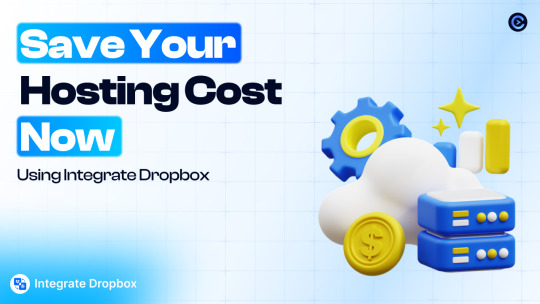
Work Smarter, Not Harder Use Dropbox As WordPress Hosting
Running a WordPress site often means juggling increasing hosting costs as your content grows. Many website owners find themselves paying premium prices for storage space, especially when their sites become media-heavy with images, videos, and documents.
Maximize Efficiency and Minimize Hosting Costs with Our Integrate Dropbox Plugin for WordPress
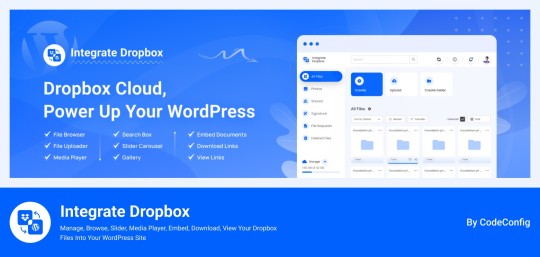
Integrate Dropbox best plugin for WordPress. Our Dropbox integration plugin reimagines how WordPress handles media storage. Instead of relying solely on your hosting server's storage, your media library seamlessly connects with Dropbox's robust infrastructure.
In the digital age, managing media files and optimizing website performance are top priorities for businesses and content creators. The balance between delivering rich media content and maintaining hosting efficiency can be challenging. That’s where Dropbox Integration Plugin comes in, providing a seamless bridge between Dropbox and WordPress to help you streamline file management, save on hosting costs, and enhance your user experience—all without coding hassles.
Why Hosting Optimization Matters
Every media file, video, or high-quality image hosted directly on your WordPress site consumes hosting resources. For companies scaling their content, this can quickly lead to higher hosting costs, slower load times, and potential website downtime. By integrating Dropbox with WordPress, CodeConfig’s plugin allows users to manage, display, and play Dropbox-hosted files directly on their site, significantly reducing the hosting load.
Integrate Dropbox Key Features To Solve Real Problems
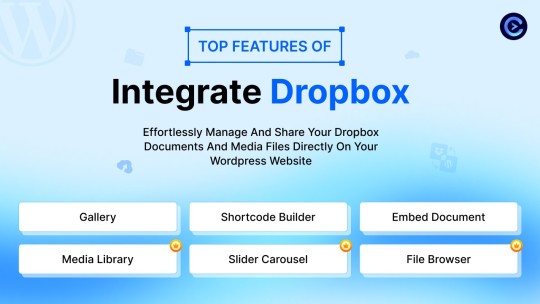
Our plugin is packed with features designed to make Dropbox integration simple, secure, and efficient:
Media Library Integration Directly access Dropbox files from your WordPress Media Library. Upload files, use high-quality images for featured posts, and seamlessly add media to your content without overloading your hosting.
Elementor and Gutenberg Integration Designed to work with popular page builders, our plugin offers 7 customizable blocks for Gutenberg and over 7 Elementor widgets. Effortlessly add Dropbox-hosted media, galleries, sliders, and file browsers to your pages without coding.
WooCommerce Compatibility For e-commerce sites, our plugin provides a unique solution for downloadable products. Upload product files to Dropbox and offer them as downloadable products in WooCommerce. This ensures smooth delivery and saves precious server space.
Dynamic File Browser, Gallery, and Media Player Add Dropbox files as interactive elements, such as galleries or media players, directly into your content. This feature is ideal for course creators and content-heavy websites. Our Slider Carousel and Media Player are customizable to fit your brand’s aesthetic, offering both style and function.
Shortcode Builder and Custom Embeds With our intuitive Shortcode Builder, users can quickly generate and customize modules like media players, sliders, and file browsers. Embed files, set view-only permissions, and create download links—all with simple shortcodes. This means less reliance on heavy plugins and more control over your content display.
Saving Costs Without Sacrificing Quality
Using CodeConfig’s Dropbox Integration Plugin not only reduces hosting expenses but also delivers a faster, more reliable user experience. By offloading storage to Dropbox, your website can handle more traffic and richer content without performance dips.
Our responsive design ensures that these features look great on both desktop and mobile, providing a seamless experience across devices.
Lightning-Fast Media Management
WordPress users can now upload media directly through the familiar WordPress interface while the plugin automatically syncs it to Dropbox. No need to learn new tools or change your workflow - everything happens behind the scenes.
Enhanced Website Performance
By offloading media storage to Dropbox, your WordPress site becomes significantly lighter and faster. Your server resources focus on running core WordPress functions rather than handling heavy media requests.
4 notes
·
View notes
Text
ClickAISites: Your Gateway to Effortless Online Selling

Powerful Features:
Create an Affiliate Store in 1 Click:
Build your ecom affiliate store on autopilot. Simply select the products from your desired niche, and let the software handle the rest.
Breathtaking Affiliate Sites:
Choose from over 50 complementary themes to create stunning, customizable e-commerce sites that attract massive traffic.
1-Click Import of Top-Selling Products:
Add high-demand products from Amazon with a single click. Access millions of products across thousands of niches.
Sell High-Quality Videos, Trainings, and More:
Beyond products, sell auto-generated trainings, videos, PLR products, and more to boost your conversions.
Automated Store Operations:
Automatically insert product names, generate content and images, update prices, and insert affiliate links. Manage multiple sites from a single dashboard.
WooCommerce Integration:
Seamlessly integrate with WooCommerce for efficient payments and smooth commission earnings.
Automated Product Management:
AI manages your products, variants, shipping, and coupons effortlessly.
Auto-Generated Blogs and Custom Pages:
Engage your audience and boost SEO with informative blog posts and custom pages created by our built-in AI.
SEO Optimization:
Improve your site’s ranking with meta keywords and descriptions to rank higher in search engines.
Mobile-Friendly Sites:
Ensure your affiliate sites are responsive and accessible from any device.
No Domain & Hosting Required:
We handle hosting and maintenance, with no monthly hosting fees or ongoing costs.
No Coding or Technical Expertise Needed:
Our AI develops websites with ease, so you don’t need to be a coder or hire one.
Start Your Own Agency:
With our unlimited commercial license, you can start a profitable agency and enjoy unprecedented profits.
100% Newbie Friendly:
Designed for beginners, anyone can use our platform.
Step-by-Step Training Included:
Access easy video tutorials and training materials to guide you through the process.
Cloud-Based Software:
Access your site from anywhere in the world on any device with a browser. No installation or updates needed.
30 Day Money Back Guarantee:
If we can’t solve your technical problems with ClickAiSite, just send us a message, and we’ll refund every penny. No questions asked.
>>>Get More Info
2 notes
·
View notes
Text
RedotPay: The Ultimate Payment Gateway for Fiat and Crypto Transactions.

Introduction
In today’s fast-paced digital economy, having a reliable payment gateway is crucial for businesses. RedotPay offers a versatile solution for managing both fiat and cryptocurrency transactions, making it an ideal choice for modern businesses. With features like zero tax transactions, free virtual cards, and global ATM access, RedotPay simplifies online payments while enhancing security and convenience. Plus, enjoy a $5 sign-up bonus and easy transferability. Discover why RedotPay is the preferred choice for businesses and how you can benefit from their referral program.
What is RedotPay?

RedotPay is an advanced payment gateway designed to handle both traditional fiat currencies and a range of cryptocurrencies. It provides a user-friendly platform that supports seamless online payments, ensuring high security and adaptability for businesses of all sizes. Key features include zero tax transactions, free virtual cards, and global ATM support.
Key Features of RedotPay
1. Support for Fiat and Cryptocurrency:
RedotPay supports transactions in both traditional currencies and digital cryptocurrencies. This feature allows businesses to cater to a diverse customer base and stay ahead in the evolving financial landscape.
2. Easy 0% Tax Transactions:
Enjoy effortless transactions with RedotPay’s zero tax processing. This feature eliminates additional transaction costs, simplifying financial management and maximizing your profits.
3. Free Virtual Card:
Upon signing up, you receive a free virtual card from RedotPay. This card can be used for secure online purchases, subscriptions, and other transactions, offering an extra layer of security.
4. Support for All Major E-Commerce Platforms:
RedotPay integrates seamlessly with all major e-commerce platforms such as Shopify, WooCommerce, and Magento. Whether you’re running an online store on Shopify or selling products on AliExpress, RedotPay ensures smooth and efficient payment processing.
5. Global ATM Access:
Access your funds from anywhere in the world with RedotPay’s support for local and international ATMs. There are no restrictions on where you can withdraw your money, offering unmatched convenience.
Why Choose RedotPay?
RedotPay is a powerful payment gateway that combines flexibility, security, and ease of use. By supporting both fiat and cryptocurrencies and offering features like free virtual cards and global ATM access, RedotPay addresses the needs of today’s global marketplace. With zero tax transactions and a $5 sign-up bonus, it’s a compelling choice for businesses looking to optimize their payment processing.
How to Benefit from RedotPay's Referral Program
RedotPay’s referral program provides an opportunity to earn commissions by introducing new clients to the platform. Here’s how you can start:
1. Sign Up:
Register for the RedotPay referral program on their website and receive a unique referral link.
2. Promote RedotPay:
Share your referral link via your website, blog, or social media. Highlight RedotPay’s key features and benefits, such as its integration with platforms like Shopify and AliExpress, to attract potential clients.
3. Earn Commissions:
For every new client who signs up using your referral link, you’ll earn a commission. The more referrals you generate, the greater your earnings.
4.Track Your Progress:
Use RedotPay’s dashboard to monitor your referrals and commissions. This allows you to stay updated on your performance and refine your promotional strategies.
Conclusion
RedotPay offers a versatile and secure payment gateway solution that accommodates both fiat and cryptocurrency transactions. With features such as zero tax transactions, a free virtual card, global ATM access, and seamless integration with major e-commerce platforms like Shopify and AliExpress, RedotPay provides exceptional value. Don’t miss the opportunity to earn a $5 sign-up bonus and commissions through the referral program. Sign up for RedotPay today and experience top-tier payment processing.
Call to Action
Ready to enhance your payment processing? Join RedotPay now to enjoy a $5 sign-up bonus and start earning through our referral program. Get started today and revolutionize your payment experience!
#crypto#bitcoin#virtual card buy with cryptocurrency#signupbonus#free earning#cryptocurrency#ecommerce#shopify#aliexpress#affiliate program
2 notes
·
View notes
Text
Dream Site Pro Review - Good or Bad?
In today’s digital age, having a strong online presence is not just an option, but a necessity. Whether you’re a small business owner, a freelancer, or an entrepreneur, your website is your digital storefront, the place where first impressions are made and lasting relationships are built. But let’s face it—building a professional, eye-catching website can be a daunting task, especially if you’re not a tech wizard. Enter Dream Site Pro, the game-changing platform designed to simplify website creation with the power of AI.
What is Dream Site Pro?
Dream Site Pro is a revolutionary AI-powered tool that allows anyone to create stunning, professional WordPress websites in just minutes. Whether you’re an experienced web designer or a complete beginner, Dream Site Pro provides the tools and templates you need to bring your vision to life without the headaches of coding or design complexities.
How Does It Work?
Dream Site Pro’s magic lies in its simplicity and AI-driven features. Here’s a step-by-step look at how it works:
1. Select a Theme: Start by choosing from over 200 beautifully designed templates, organized into more than 30 niches. Whether you’re looking to create a site for a coffee house, a travel blog, or a dental clinic, there’s a template that fits your needs.
2. Customize with Ease: With the intuitive drag-and-drop editor, you can easily tweak the layout, colors, fonts, and other design elements to match your brand. The AI tools also offer suggestions to enhance your site’s appearance and functionality, ensuring it looks professional and is user-friendly.
3. Enhance with Features: Dream Site Pro comes packed with built-in features like call-to-action management, Google Maps integration, and social media tools to boost engagement. For e-commerce needs, the seamless WooCommerce integration allows you to set up an online store effortlessly.
4. Publish and Optimize: Once you’re happy with the design, you can publish your site with a single click. Dream Site Pro handles all the technical details, ensuring your website is fast, secure, and optimized for SEO.
5. Manage and Grow: The platform includes advanced lead management and analytics tools, helping you track performance and refine your strategies. Plus, with the built-in autoresponder integration, you can automate your email marketing to nurture leads and drive conversions.
Why Choose Dream Site Pro?
AI-Powered Efficiency: Dream Site Pro leverages AI to simplify and accelerate the web design process. From automatic SEO optimization to compliance with ADA and GDPR regulations, the AI handles it all, letting you focus on what matters most—your business.
Cost-Effective Solution: Forget about expensive developers or recurring monthly fees. Dream Site Pro offers a one-time payment for lifetime access, making it a budget-friendly choice for entrepreneurs and small business owners.
Versatility and Customization: With a wide range of templates and customization options, Dream Site Pro is versatile enough to cater to any industry or niche. The drag-and-drop editor and AI enhancements ensure that your site is not only unique but also highly functional.
Commercial Licensing: Looking to expand your business? Dream Site Pro comes with a commercial license, allowing you to create and sell unlimited websites to clients. It’s a fantastic opportunity for freelancers and agencies to boost their revenue.
Comprehensive Support and Training: Dream Site Pro provides extensive training resources and dedicated customer support to help you every step of the way. Whether you’re setting up your first website or managing multiple client projects, you’re never alone.
Real Success Stories
Dream Site Pro isn’t just another web design tool—it’s a catalyst for success. Take Sarah, for example, who skyrocketed her website traffic by 200% after switching to Dream Site Pro’s AI-powered designs. Or John, who saw a 300% increase in revenue within three months of using the platform. These are just a few examples of how Dream Site Pro is transforming businesses and lives.
Conclusion
In a world where digital presence is key to success, Dream Site Pro offers an unparalleled solution to web design challenges. It’s more than just a tool; it’s a partner in your entrepreneurial journey, empowering you to create stunning websites with ease and efficiency. Ready to take your online presence to the next level? Discover the power of AI with Dream Site Pro today and watch your business soar.
So why wait? Unleash your creativity and build your dream website with Dream Site Pro now. Your digital future awaits!
#dreamsitepro#dreamsiteproreview#dreamsiteprooto#AIpoweredwebsitebuilder#dreamsiteprobundle#dreamsiteprocouponcode#dreamsiteprobonuses#WordPresswebsitetemplates#easywebsitecreationtool#Bestwebsitebuilder2024#Draganddropwebsiteeditor#Affordable web design software#SEO optimized website builder#AI-driven web design tool#One-time payment website builder#Small business website builder#Professional website templates#Fast website creation tool#Website builder for beginners#Best WordPress themes 2024#E-commerce website builder#AI website design software#Website builder with lead management#AI tools for web design#Commercial license website builder#Customizable website templates
2 notes
·
View notes
Text

Unlocking FedEx Home Delivery: A Definitive Manual for WooCommerce & Shopify Users
Efficient shipping solutions are vital for e-commerce success, with FedEx Home Delivery standing out for residential deliveries in the US. For WooCommerce and Shopify users, understanding FedEx Home Delivery surcharges is crucial. This guide explores the nuances of these surcharges, comparing residential and commercial rates, and offers actionable insights for merchants.
Understanding FedEx Home Delivery Surcharge: FedEx Home Delivery relies on FedEx Ground's infrastructure but varies significantly in cost, especially for residential deliveries.
Why Use FedEx Home Delivery?
It's ideal for shipping heavier items to residential addresses without commercial amenities. Despite higher surcharges, it's cost-effective for specific customer demographics.
Comparing Costs: FedEx Express and FedEx Ground have raised commercial surcharges, while FedEx Home Delivery's residential surcharge stands at $3.80 per package.
Identifying Residential Addresses: Residential surcharges apply to shipments to homes or private residences within the US.
Integration with WooCommerce & Shopify: Choose plugins or apps that accurately calculate shipping costs, including residential surcharges.
Optimizing Shipping: Batch processing, address verification, and negotiating rates can mitigate surcharge impacts.
By following this comprehensive guide, WooCommerce and Shopify users can unlock the full potential of FedEx Home Delivery, empowering them to deliver exceptional service and exceed customer expectations in their online ventures. Conclusion: Grasping the nuances of FedEx Home Delivery surcharges is paramount for streamlined e-commerce operations.
2 notes
·
View notes
Text
Pinswizard’s Ultimate Pinterest Tag Setup Guide: A Step-by-Step walkthrough to Boost Your Tracking & ROI

Introduction
In today’s visual-first digital landscape, Pinterest is more than a discovery platform—it’s a powerhouse for driving traffic, conversions, and brand awareness. At the heart of Pinterest marketing lies the Pinterest Tag Setup, an essential tool for tracking visitor actions on your website and optimizing ad performance.
1. What Is the Pinterest Tag?
The Pinterest Tag is a piece of JavaScript code you embed on your website. It collects data about visitors and their actions—such as page views, sign-ups, or purchases—and sends that data to Pinterest. This empowers advertisers to:
Build audience segments for targeted campaigns
Measure campaign performance accurately
Optimize bids automatically based on conversions
Without the tag, you’re flying blind—Pinterest ads lose clarity and purpose without reliable data.
2. Why You Should Set Up the Pinterest Tag
2.1 Precision in Tracking
Capture critical events: view content, sign-ups, add-to-cart, purchases.
Understand which pins drive the most valuable actions.
2.2 Smarter Audience Targeting
Retarget users who’ve visited key pages.
Build lookalike audiences of high-value visitors.
2.3 Optimization Efficiency
Use Pinterest's conversion-optimized campaigns.
Reduce cost-per-acquisition by automating bidding.
2.4 Better Attribution
Attribute conversions back to campaigns/pins.
Measure ROI across devices and sessions.
3. Before You Start
Before diving in, gather:
Access to your Pinterest business account
Admin-level access to your website (CMS or code)
Basic tech knowledge (or developer help)
Pinswizard also recommends setting up Google Tag Manager (GTM) if you're not comfortable editing site code directly.
4. Pinterest Tag Setup: Step-by-Step Guide
4.1 Create or Locate Your Pinterest Tag
Log into your Pinterest Business account.
Go to Ads > Conversions.
Under “Pinterest tag,” click Set up tag.
Copy the base code snippet provided.
4.2 Verify Installation
In Pinterest Ads Manager, use the Tag Helper (browser extension) to check firing on pages.
Use your browser’s “View Source” or GTM debug mode.
Wait 24 hours for Pinterest to register and validate. A green checkmark confirms activity.
5. Implementing Conversion Tracking Events
Key events:
pagevisit: logged on every page load
signup: user completes a form
Add to cart: product added to cart
checkout: purchase confirmation page
lead: lead capture submission
HIP: set up only the events essential to your business goals.
6. Analyzing Data & Optimizing Ads
Once the tag is firing correctly:
Go to Ads > Conversions — view event count and metrics.
Build Retargeting & Lookalike audiences based on site activity.
Run Conversion-optimized campaigns to let Pinterest bid for you.
Utilize attribution windows (1-day, 7-day view/click) for performance analysis.
7. Best Practices & Tips from Pinswizard
Always install the base tag sitewide first.
Track only meaningful events to prevent unnecessary noise.
Verify tag with Pinterest’s Tag Helper or GTM preview.
Wait 24–48 hours after installation to collect data.
Use a staging/test environment to verify custom GTM triggers.
Be mindful of GDPR/CCPA privacy laws—remember to include tag in your cookie policy.
8. Pinterest Tag Setup for Popular Platforms
8.1 Shopify (with GTM)
Add GTM script in Shopify admin > Online Store > Theme > Edit Code.
Follow GTM instructions above.
8.2 WooCommerce (WordPress)
Use plugins like DuracellTomi Pinterest Tag, or add base tag manually.
For events on checkout, map WooCommerce hooks to Pinterest tags.
9. Pinterest Tag Debug & Maintenance Checklist
Base tag installed on every page
Conversion (or other) events set up and validated
Tag Helper shows events firing
GTM triggers validated in preview mode
Dynamic values tested in test orders
Cookie consent banners allow tag to fire
Tag maintenance scheduled (e.g., review quarterly)
FAQ
1. What’s the difference between base tag and event tags?
The base tag collects general visitor data sitewide, while event tags capture specific actions (e.g., purchases, sign‑ups) tied to meaningful conversions.
2. Do I need GTM to set up a Pinterest Tag?
No—you can add the base and event snippets manually. But for better manageability and fewer code deployments, GTM is highly recommended.
3. Why is my "checkout" event showing zero conversions?
Potential causes:
Snippet missing on conversion page
Variables for price or currency misconfigured
Ad blocker or cookie consent blocking tag loading
Delay—Pinterest can take up to 48 hours to register events
4. Can I track dynamic product IDs or values?
Yes—via GTM, you can insert dynamic variables (like transactionTotal or productID) into the Pinterest event code.
5. Is Pinterest Tag GDPR/CCPA compliant?
Pinterest requires user consent before firing tags in regions with privacy regulations. Make sure your cookie consent banner supports Pinterest scripts.
6. How do I test the tag without impacting real data?
Use a staging environment or add a debug parameter in GTM to simulate events. Pinterest also provides Tag Helper to validate firing.
7. Can I use Pinterest Tag for retargeting?
Absolutely—you can create website-segment audiences (e.g., “visited product page” or “added to cart”) and retarget them in ads.
8. Do I need to redo the setup if I redesign my site?
Revisit the tag after redesign or codebase changes. Ensure the base tag and all event triggers are still present on the correct pages.
9. Why does Pinterest tag count differ from GA?
Different tracking methods and attribution windows. Pinterest tracks pixel-level events; Google Analytics uses JavaScript and session-based tracking. Expect discrepancies.
10. How long does Pinterest retain tag data?
Pinterest keeps data for audience building and analytics. Typically, pixel data is retained for up to 180 days, though audience recency may define targeting.
Conclusion
Successful Pinterest Tag Setup is essential for powering your Pinterest advertising with data-driven insights. With Pinswizard’s guide, you can:
Install reliably (base + event tags)
Track meaningful conversions
Analyze and optimize ads effectively
Troubleshoot common issues quickly
Ready to level up your Pinterest campaigns? Implement the tag today, fine-tune your targeting, and watch your ROI climb!
#Pinterest Management Service#Affiliate Marketing Pinterest#Pinterest Marketing Service#Benefits Of Pinterest Marketing For Interior Designers
0 notes
Text
Best E-Commerce Course Near You
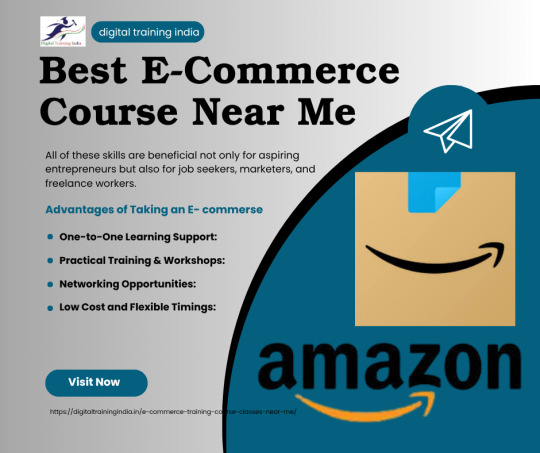
Best E-Commerce Course Near You
In the current digital-first world, e-commerce is one of the speediest-growing sectors. Due to the growth of online shopping, digital payments, and international delivery systems, the need for e-commerce professionals has increased exponentially. Whether you wish to begin your own online business, work with leading e-commerce companies, or establish a freelancing profession, joining an e-commerce course near me can be a change-maker.
In this blog, we’ll explore why an e-commerce course near me is essential, what you’ll learn, and how finding a local training institute can boost your digital career.
Choose an E-Commerce Course?
The e-commerce training near me sector is booming. Online retail, as per trends, will see steady growth in the years to come, particularly in nations such as India where internet penetration is expanding dramatically. A good e-commerce course educates you on:
* Launch and operate an online shop
* Learn about customer behavior and market trends
* Handle logistics and inventory
* Operate digital marketing campaigns for products
* Utilize platforms such as Shopify, WooCommerce, Amazon, Flipkart, and others
All of these skills are beneficial not only for aspiring entrepreneurs but also for job seekers, marketers, and freelance workers.
Advantages of Taking an E-Commerce Training Centre near me
One-to-One Learning Support:
Visiting a local course permits face-to-face interaction with instructors. You can have questions answered, do hands-on exercises, and receive instant feedback.
Practical Training & Workshops:
Most of the local institutions provide live project work, such as creating a live online store, handling advertisements, or adding payment gateways.
Networking Opportunities:
You interact with like-minded people who are also embarking on their e-commerce ventures. This often results in collaborations, joint ventures, or even references to jobs.
Low Cost and Flexible Timings:
Local courses usually have lower fees than online platforms, and they offer weekend or evening batches to fit your schedule.
What You’ll Learn in an E-Commerce Course
A comprehensive e-commerce course typically covers the following modules:
Introduction to E-Commerce and Online Business Models
Website Creation Using Shopify, WordPress, or Wix
Product Listing, Pricing, and Inventory Management
Digital Payment Integration
Search Engine Optimization (SEO) for E-commerce
Social Media & Email Marketing for Online Stores
Customer Service and Return Policy Management
Analytics, Conversion Tracking, and Reporting
Advanced modules in dropshipping, affiliate marketing, and mobile app e-commerce are even provided by some institutes.
0 notes
Text
Fulfillment Companies in Canada: Powering Growth Through Reliable Canada Fulfillment Services
As eCommerce and omnichannel retail continue to surge across North America, the demand for efficient, tech-enabled logistics is growing rapidly. Businesses that sell physical products—whether B2B or B2C—need reliable fulfillment partners to ensure fast, accurate, and cost-effective delivery. This is where fulfillment companies Canada step in to transform operations and customer experiences.
With a highly developed logistics infrastructure, proximity to major U.S. markets, and a rapidly growing domestic eCommerce scene, Canada fulfillment solutions are no longer just a regional necessity—they’re a global competitive advantage.
The Rise of Fulfillment Companies in Canada
In recent years, Canada has emerged as a prime hub for fulfillment and logistics. With major cities like Toronto, Vancouver, and Montreal offering access to both Canadian and U.S. markets, it’s no surprise that many businesses—both local and international—are partnering with professional fulfillment companies Canada.
Key Advantages:
Strategic warehouse locations reduce last-mile delivery times.
Bilingual services cater to Canada’s English and French-speaking customers.
Technology-driven operations streamline inventory management and real-time tracking.
Scalability for businesses that need to expand quickly without increasing operational burden.
Cross-border expertise makes Canada a launching pad for U.S. and global fulfillment.
Whether you’re an eCommerce brand, a subscription box provider, or a B2B wholesaler, Canadian fulfillment providers offer flexible solutions that align with your growth goals.
What to Expect from Canada Fulfillment Services
Modern Canada fulfillment services go beyond basic warehousing. They provide end-to-end solutions that are fully integrated with your eCommerce platforms, allowing for seamless operations and real-time visibility.
Services Typically Include:
Inventory storage in secure, climate-controlled facilities
Order picking and packing with custom packaging options
Same-day or next-day shipping within key Canadian markets
Multi-channel integration (Shopify, Amazon, WooCommerce, etc.)
Returns and reverse logistics to simplify post-purchase processes
Data analytics to help optimize inventory turnover and reduce costs
These full-service operations allow brands to maintain high service levels while staying lean and focused on growth.
Why Businesses Choose Fulfillment Companies in Canada
Outsourcing to a fulfillment provider is a strategic move that provides immediate operational benefits. It’s especially valuable for:
Startups and growing eCommerce brands that can’t justify their own warehouse
Retailers looking to expand into Canada without opening a physical location
International companies needing a local presence for faster delivery
DTC brands requiring fast shipping and branded unboxing experiences
Subscription-based models needing consistent monthly shipping accuracy
The top fulfillment companies Canada offer scalable logistics infrastructure that adapts as your order volume grows—without the risk or capital expenditure.
How to Choose the Right Canada Fulfillment Partner
When selecting a fulfillment partner, here’s what to look for:
Geographic coverage: Warehouses in or near your key customer zones
Order accuracy rates: Proven record of reliable fulfillment performance
Technology stack: Compatibility with your eCommerce platform and CRM
Customer support: Dedicated account reps and responsive service
Pricing transparency: All-inclusive fees with no hidden costs
Value-added services: Kitting, labeling, returns management, etc.
Your fulfillment provider should act as a true extension of your brand, not just a service vendor.
Conclusion
In a fast-paced retail and eCommerce environment, choosing the right logistics partner is not just a smart business decision—it’s a competitive advantage. The top fulfillment companies Canada provide scalable, tech-enabled solutions that simplify order fulfillment and elevate customer satisfaction.
With strong infrastructure and growing demand, Canada fulfillment services offer businesses a unique opportunity to streamline operations, reduce delivery times, and expand with confidence. Whether you're launching a new brand, expanding into Canada, or looking to improve customer experience, partnering with a reliable fulfillment provider is the key to lasting success.
For original post visit: https://www.bipamerican.com/fulfillment-companies-in-canada-powering-growth-through-reliable-canada-fulfillment-services
0 notes
Text
The Ultimate Guide to Website Design Templates
How to Choose, Customize, and Launch a Beautiful Site—Fast
Building a website from the ground up used to demand weeks of coding and design. Today, website design templates let anyone launch a polished, responsive site in a fraction of the time—and often for free. In this guide you’ll discover the most popular template types, where to find the best free website templates, and smart tips for choosing and customizing layouts that fit your brand.
1. Why Use Website Templates?
Using website design templates offers several benefits that make them ideal for beginners and professionals alike. First, they are cost-effective, with dozens of high-quality free website template options available online. These templates also allow for rapid deployment, enabling you to launch a fully functional website in just hours instead of weeks.
Most templates require no heavy coding, especially when using drag-and-drop builders or simple HTML and CSS templates, making them accessible even to non-developers. Additionally, they provide design consistency, offering pre-tested user experiences, well-balanced typography, and cohesive color palettes. Best of all, most templates are responsive out-of-the-box, meaning they are already optimized for mobile devices without needing additional work.
Whether you’re a freelancer, small business, or startup, templates reduce overhead so you can focus on content and customers, not plumbing.
2. Main Types of Website Design Templates
A. Static HTML/CSS Templates
Pure HTML and CSS template files—great for landing pages or brochure sites.
Popular sources:
Colorlib – sleek one‑pagers
HTML5 UP – creative, fully responsive designs
GitHub repos – community‑maintained free css template collections
B. Framework‑Based Templates (Bootstrap)
Bootstrap templates use the world’s most popular CSS framework for instant responsiveness.
Free Bootstrap templates at BootstrapMade, StartBootstrap
Ready‑made grids, modals, navbars—perfect for rapid prototyping
Easy to extend with custom SCSS or JavaScript
C. CMS & Theme Templates
Platform Example Template Best For WordPress Astra theme Blogs, small business, WooCommerce stores Shopify Dawn E‑commerce Joomla / Drupal Helix, Gantry Community and portal sites
These “themes” plug into a CMS and let you control content with zero code.
D. Design‑Only Templates (Figma)
Figma templates are editable design files—perfect for designers who hand off to dev teams. Export assets, tweak typography, and test UX flows before writing code.
3. Where to find free & Premium Templates
TemplateMonster HTML, Bootstrap, WordPress, Shopify Free–\$99+
ThemeForest WordPress, React, HubSpot \$10–\$79
Creative Market Figma, Webflow, email templates \$8–\$99
Envato Elements Unlimited downloads, subscription \$16.50/mo (sub)
StartBootstrap Free & premium bootstrap templates Free–\$39
4. How to Choose the Right Template Design
Match Your Goal – Portfolio? Pick a gallery‑centric layout. SaaS? Opt for a pricing‑focused landing page.
Check Responsiveness – Test demos on phone and tablet.
Inspect Code Quality – For free HTML templates, confirm semantic HTML5 and organized CSS.
Review Licensing – Some free assets require attribution.
Assess Performance – Lightweight Bootstrap templates often score higher in Core Web Vitals than bloated themes.
5. Customizing Your Template
Editing Static Templates
Update images and copy in /assets and /index.html.
Modify colors in style.css or add your own custom.css for maintainability.
WordPress / Astra Theme
Install Astra Starter Templates plugin.
Import a starter site.
Use the WordPress Customizer or Elementor to tweak fonts, layouts, and sections—no PHP needed.
Bootstrap‑Powered Sites
Override variables in scss/_variables.scss.
Use Bootstrap Icons for on‑brand visuals.
Bundle with Gulp or Webpack for minification.
Figma Templates
Rebrand colors via global styles.
Export SVGs/PNGs for direct use in your html css template.
Share with developers through Figma Inspect for CSS snippets.
6. Templates Categories & Best Picks(2025)
Portfolio “Photon” (HTML5 UP), “Brooklyn” (ThemeForest)
Blog “Astra” free starter blog, “Newspaper X” (Envato)
Business “BizLand” (BootstrapMade), “Consulting WP” (TemplateMonster)
eCommerce “Shopper” (Colorlib), “Flatsome” WooCommerce theme
Landing “Creative” (StartBootstrap), “LeadGen” HTML + Sass template
7. Future of Website Templates
No‑code builders: Webflow, Wix, Squarespace keep adding AI design assistants.
Component marketplaces: Buy individual sections instead of full themes.
Dark‑mode ready: Expect templates with instant light/dark toggles.
Accessibility baked in: WCAG‑compliant color contrast and ARIA roles by default.
FAQs
Q: Are free website templates safe? Yes—when sourced from reputable sites. Scan code for hidden links and keep CMS plugins updated.
Q: What’s the difference between “template” and “theme”? A template is any pre‑designed file set; a theme is a template built specifically for a CMS like WordPress or Shopify.
Q: Can I use Figma templates to build a real site? Absolutely—export assets or hand off to devs who convert designs into HTML CSS templates or Bootstrap templates.
Conclusion
Whether you grab a minimalist free bootstrap template, a multipurpose Astra theme, or craft pixel‑perfect layouts in Figma, website design templates slash development time and budget. Start with a design that matches your goals, customize it to reflect your brand, and launch—faster than ever.
Ready to explore? Check out TemplateMonster for new releases or spin up a Spring Boot‑powered backend to pair with your shiny new front‑end template design.
1 note
·
View note
Text
Top 10 Best Tools for Omnichannel Marketing in 2025
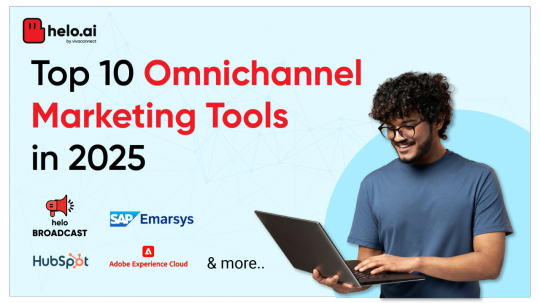
Let’s face it your customers are everywhere.
They browse your website on their laptops, check offers on WhatsApp, scroll Instagram for product reviews, and maybe get a follow-up email the next morning. But if each of those touchpoints feels like a disconnected experience, you’re not building trust you’re just showing up.
That’s where omnichannel marketing comes in.
It’s not just about being present on multiple platforms. That’s multichannel. Omnichannel is about creating a connected, consistent experience across all of them so your customer feels like they’re talking to one brand, not a bunch of different departments.
Think of it like this: Instead of blasting out the same message everywhere, omnichannel tools help you understand where your customer is in their journey and respond accordingly across WhatsApp, SMS, email, or even in-store.
The result? More meaningful interactions, fewer drop-offs, and a better chance at turning browsers into buyers and buyers into loyal fans.
Ready to find the right tools to make that happen? Let’s explore the top 10.
If you're still confused between the two, check out our detailed guide on Omnichannel vs Multichannel Marketing to see the key differences.
In this blog, we’ll go one step further and show you the top 10 best tools for omnichannel marketing in 2025: tools that help unify customer experiences across SMS, email, WhatsApp, social, and more. Whether you're a startup or a growing enterprise, these platforms will help you build seamless, personalized journeys that convert.
1. Helo Broadcast
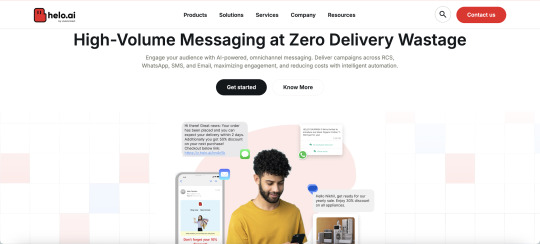
#1 AI-powered tool for enterprise-grade omnichannel campaigns
Helo Broadcast is built to supercharge your outreach by delivering high-impact campaigns across SMS, WhatsApp, RCS, Voice, Email, and Social Channels—all from a single unified platform.
Key Features:
Multi-Channel Messaging: Run integrated campaigns on SMS, WhatsApp, RCS, Voice, Email, and more—with zero channel conflict.
AI-Powered Optimization: Smart delivery algorithms choose the best time, channel, and message variant to maximize open and click rates.
Built-in Compliance Engine: Automatically handles DLT, TRAI, and opt-out regulations for India and global markets.
Real-Time Analytics: Get actionable insights on message delivery, read rates, conversion events, and drop-offs—across every channel.
Drag-and-Drop Journey Builder: Create personalized customer journeys with easy triggers like cart abandonment, form fills, and payment status.
No-Code Integration: Plug Helo Broadcast into your CRM, eComm stack, or lead forms via APIs, Webhooks, and Zapier.
📊 Impressive Stats:
Over 2+ billion messages delivered per month
Upto 43% increase in engagement with AI-based channel switching
Clients have seen upto 52% reduction cost for their campaigns
99% uptime when campaigns are worked through Helo Broadcast
Why It’s the Best:
Helo Broadcast isn’t just a tool—it’s a full-stack campaign engine built for BFSI, e-commerce, retail, fintech, and D2C brands. It empowers marketers to move fast, stay compliant, and scale communication across multiple customer touchpoints without juggling 5 different dashboards.
2. ActiveCampaign
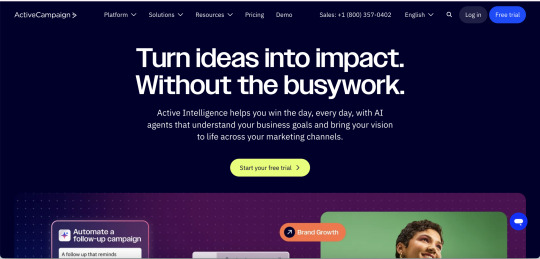
Automation powerhouse for SMBs
Combines email, SMS, social ads, CRM, and chat
Powerful automation workflows
Integrates with 900+ apps
Trusted by thousands for seamless customer follow-ups
3. Brevo (formerly Sendinblue)
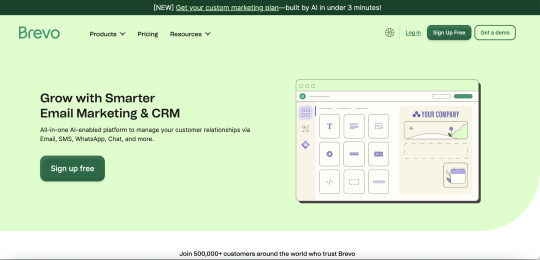
Affordable and versatile
Offers email, SMS, chat, CRM, and marketing automation
Scales from free plans to advanced tiers
Especially strong for email/SMS combos in e‑commerce
4. HubSpot

All-in-one growth and CRM platform
Email, social, SMS, chat, ads & robust CRM
Inbound marketing suite with automation tools
Ideal for nurturing leads through content & targeted campaigns
5. Omnisend

E‑commerce & SMS specialist
Focused on email, SMS, and web push
Drag��and‑drop editor, templates, and Shopify/WooCommerce integrations
Trusted by 100,000+ stores for commerce-driven campaigns
6. Klaviyo
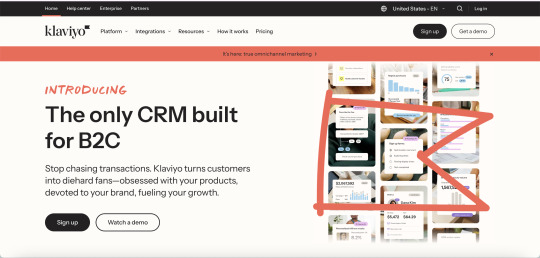
Behavior-driven marketing for online stores
Deep customer segmentation (purchase history, behavior)
Email + SMS workflows optimized for conversions
Strong Shopify and BigCommerce ecosystem presence
7. GetResponse
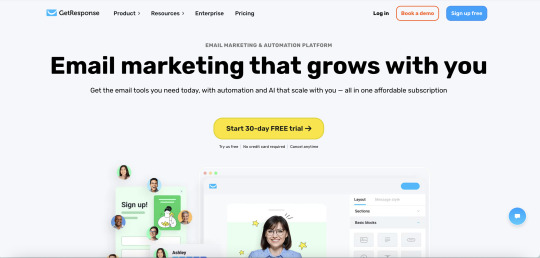
Flexible and budget-friendly
All-in-one email, landing pages, webinars, SMS
Segmentable multi-channel flows
Suits SMBs looking to dip toes into cross-channel automation
8. EngageBay
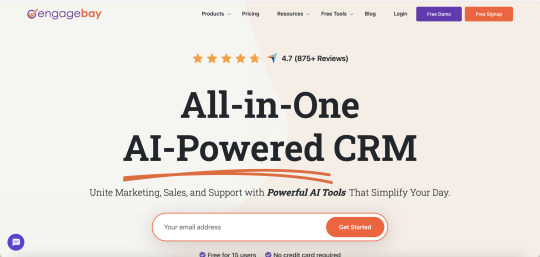
Affordable all-in-one solution
CRM, email, SMS, live chat, marketing automation
Drag‑and‑drop builder, starter-friendly pricing
Great for SMBs needing unified tools on a budget
9. Adobe Experience Cloud
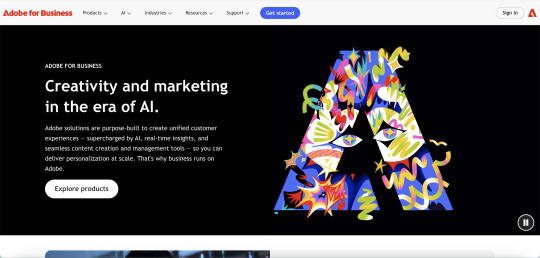
Enterprise-grade marketing suite
Covers analytics, email, SMS (via Adobe Campaign), ads & personalization
AI agents automate data optimization, content, and customer journeys
Ideal for complex, large‑scale omnichannel strategies
10. SAP Emarsys
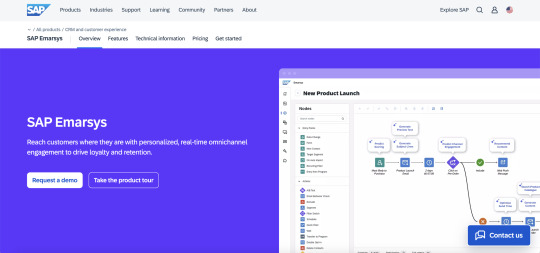
Scalable & data-rich automation
Enables email, SMS, web push, and in-store messaging
Unified data integration and AI-driven personalization
Perfect for brands aiming for personalized messaging at scale
How to Choose the Right Tool
Enterprise Needs – Helo Broadcast , Adobe Experience Cloud, SAP Emarsys
Size & Budget – SMBs: Brevo, EngageBay, GetResponse
E‑commerce Focus – Omnisend, Klaviyo
All-around Automation Ready – Helo Broadcast , ActiveCampaign, HubSpot
Conclusion & Unique Insight
There’s no one-size-fits-all in omnichannel marketing. But Helo Broadcast stands out as a smart, agile, and insight-driven tool that adapts to customer behavior in real time. It sits well between SMB-friendly solutions and enterprise-grade suites offering flexibility and powerful analytics.
My take: Start small, align channels carefully, and prioritize personalization powered by data. Tools that integrate AI (like Helo’s smart timing/segmentation or Adobe’s agents) will deliver more meaningful and profitable customer experiences.
#OmnichannelMarketing#omnichannelmarketingtools#top 10#technology#Best marketing tool#marketing tools
0 notes